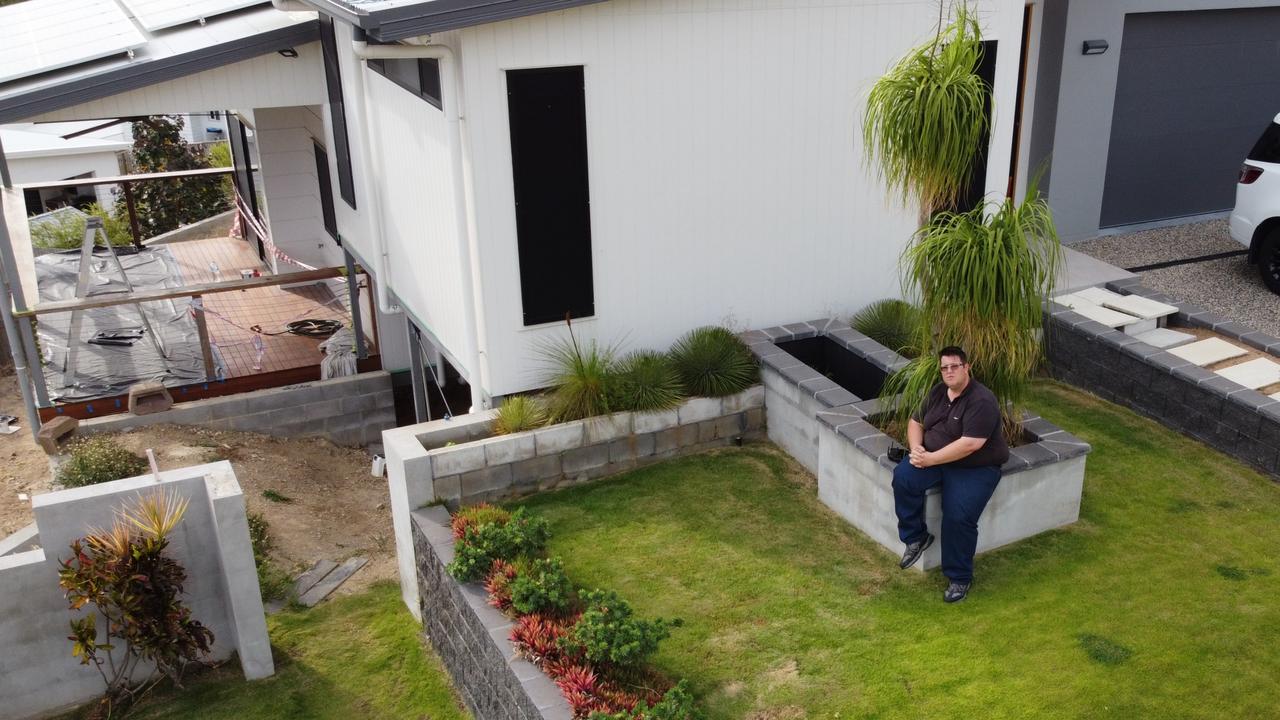Fury at QBCC for actions over defect-riddled north Qld house
A north Queensland man says his new $400,000 house has so many defects – including inadequate cyclone protection – it might be cheaper to knock it down and start again.
Opinion
Don't miss out on the headlines from Opinion. Followed categories will be added to My News.
A Townsville telecommunications engineer praised for his cyclone disaster recovery work now faces a disaster of his own.
Mark Agius can’t move into his new $400,000 house on a hill in the Townsville suburb of Mount Louisa because it has so many defects – and he fears it will blow away in a cyclone.
Agius, 40, says it may even be cheaper to knock down and start again.
He is furious with the state government building watchdog, the Queensland Building and Construction Commission, for dithering and “agreeing to retrospectively downgrade wind speed cyclone safety standards without my knowledge”.
He engaged independent wind and building experts who pointed to 75 major defects, including structural defects.

They found that windows were below required ratings, cladding not to manufacturers’ specification and cyclone rods not connected. They found a stormwater run-off problem under the building, erosion and insufficient downpipes.
“All building work must comply with the requirements of the Building Code of Australia and it does not,” he said.
He said it was all very strange because the building looked OK from the outside.
“If you drove past you may not even notice there are major problems.”
Complaints against the QBCC are pouring in after my column last week highlighting a residential building fire risks in Brisbane.
That matter is now before the Crime and Corruption Commission.
In Agius’s case the QBCC asked him to “thin the list down and get to the big-ticket items”.
The QBCC then issued the builder with a Direction to Rectify, but that led to an even bigger dispute that should ring alarm bells for anyone building in north Queensland.
Agius said his home was not compliant with cyclone standards, and two eminent experts agree.
His Mount Louisa location required a cyclone territory C3 rating is used for “medium exposure sites”.
“The QBCC was presented with a new wind certificate by the builder that sought to make the building compliant by lowering the building to a C2 classification for low wind pressure exposure,” he said.
“The QBCC building inspector ultimately made a decision on the spot to disregard the C3 classification and accept the C2 rating.”
Agius engaged engineer Dr John Holmes, chairman of the expert panel managing the Australian Standard for Wind Loadings on Structures.
Holmes concluded Agius’s house was severely underrated to withstand the expected wind loadings.
He found the original design wind speed to be “completely inadequate for the site”.
Holmes reminded builders that wind gusts reached 263km/h on Hamilton Island (also in Region C) during Cyclone Debbie in 2017.
Holmes added: “The recommended design values should not be reduced for economic or other reasons.”
Structural engineer Dr Geoffrey Boughton, agreed. He speaks with authority as adjunct professor at James Cook University’s Cyclone Testing Station.
He said the home was “constructed significantly below the required rating”.
Agius’s battle continues although some rectification works unrelated to the wind rating issues are under way.
“Obviously the safety codes have not been regulated successfully,” Agius said.
“I know I am not alone. Other houses have been built below standards required to withstand cyclonic winds.
“One of my experts told me there could be catastrophic consequences.”
Agius has written to Housing Minister Mick de Brenni alleging “improper conduct” by the QBCC.
He has not had a response. De Brenni and QBCC declined interview requests.
Des Houghton is a media consultant and a former editor of The Courier-Mail,
the Sunday Mail and the Sunday Sun.



